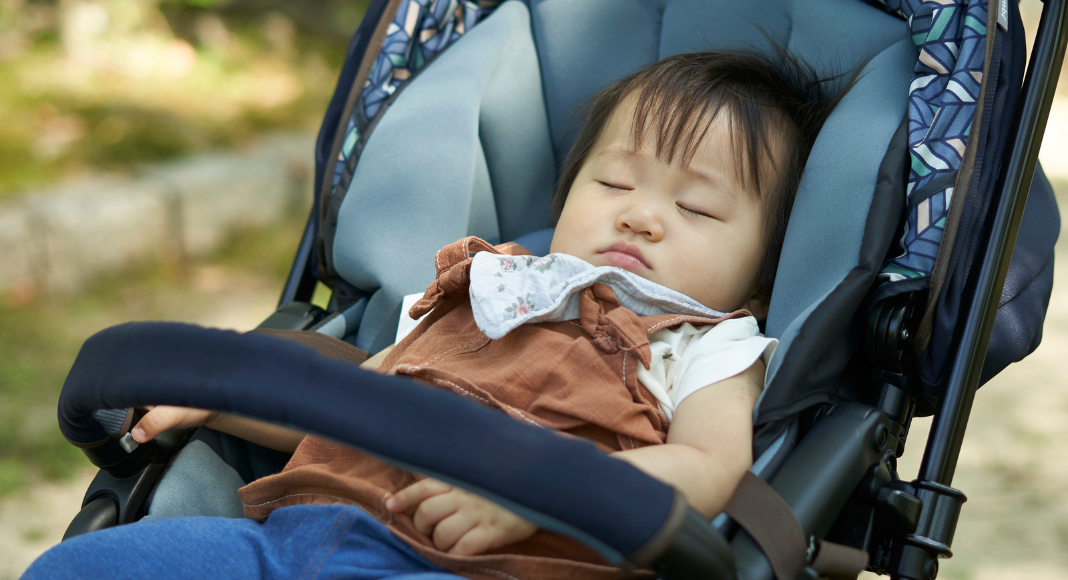 Are you worried that holiday travel will wreak havoc with your child’s sleep? Here are my top travel sleep tips to help you enjoy your vacation and have a happy, well-rested child.
Are you worried that holiday travel will wreak havoc with your child’s sleep? Here are my top travel sleep tips to help you enjoy your vacation and have a happy, well-rested child.
1. Make your child’s temporary bed or crib as sleep-friendly as possible.
If you’re staying in a hotel, find out if they provide portable cribs, pack-n-plays, or roll-away cots, and reserve one in advance. Inspect it carefully to ensure that it’s safe and sturdy before use. Pack your child’s regular sheets or favorite blankets and pillows; everyday items will help them feel comfortable in the new space. Don’t forget a night light (with an extra light bulb!), favorite bedtime books, bedtime music, and loveys. If you’re traveling by air, be sure to pack them in your carry-on bag if your checked baggage is delayed or lost. Place roll-away mattresses on the hotel room floor to avoid middle-of-the-night tumbles, or place a mattress on the floor next to your bed to help your child feel more secure.
2. If your plans involve staying with relatives, ask them for help in locating a borrowed crib or pack-n-play.
Be sure that they are sturdy, newer models – older cribs may pose a safety risk. If using second-hand items makes you nervous, think about purchasing a new pack-n-play or crib to leave with relatives. If you visit frequently or other family members visit with their children, they may be willing to split the cost with you. It’s an investment but well worth it over time.
3. Try to have your child sleep in the same place for the entire vacation.
Continuity and familiarity with their sleep space will help your child relax and settle more quickly. If you’re visiting several relatives who live within driving distance, use one house as a home base, and travel back to it every evening for bedtime.
4. Bring a monitor with you to listen for your child.
You’ll be much more relaxed if you can keep tabs on your little sleeper while enjoying your time with the grown-ups.
5. If you plan to share a room or bed with your child on vacation, be sure to follow safety guidelines with infants, and be clear with your older children that the arrangement is temporary.
Remind your child frequently that they’ll be back in their bed when you get home, and mommy and daddy will be back in theirs. Be clear that you’re only bending the rules until vacation is over.
6. If your travel includes crossing time zones, get your child up at their regular wake-up time at the start of your vacation and the end of your trip.
For example, if your child wakes up at 7 a.m. in CT, wake him at 7 a.m. local time in L.A. When you get back home, wake him at 7 a.m. EST. Switch all naps and bedtimes to the local time the first full day after your arrival, or, if you’re recovering from a particularly long and challenging journey, do it the next day.
7. Schedule time for naps.
Although the excitement of new places and people during vacation can make napping a challenge, try your best to keep your child rested. A three-year-old may be able to skip naps, but younger children still need to nap every day. Do your best to carve out downtime. Although naps in cars and strollers aren’t ideal, they’re better than no naps, so let your child nap on the go if that’s all your busy schedule allows. Be sure to make bedtime a bit earlier than usual, no matter your child’s age. Avoiding overtired meltdowns and respecting your child’s need for sleep will keep everyone happy and make the transition back home to their routine a breeze.
8. Don’t let worrying about sleep ruin your vacation.
You can’t force your child to sleep – do your best to create the opportunity. If sleep gets off track, remind yourself that you can get back on track when you return home.
























